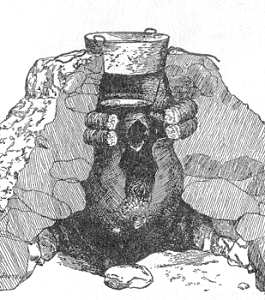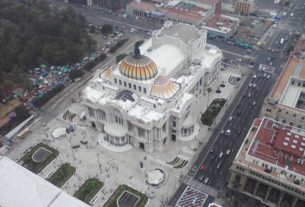Did You Know…?
In 1897, Carl Lumholtz, the famous Norwegian ethnologist, who spent several years living with remote Indian tribes in Mexico, found that the Huichol Indians in eastern Nayarit distilled agave juice using simple pot stills, the pots being quite unlike any other Spanish or pre-Columbian vessels.

By 1944, Henry Bruman, a University of California geographer, had documented how Filipino seamen on the Manila Galleon introduced similar stills to western Mexico, for making coconut brandy, during the late sixteenth century.
Dr. Nyle Walton, of the University of Florida, later showed how the Spanish authorities had sought to suppress Mexican liquor production because it threatened to compete with Spanish brandy. This suppression led to the establishment of illicit distilling in many remote areas, including parts of Colima and Jalisco. Even today, the word “tuba”, which means coconut wine in the Filipino Tagalog language, is used in Jalisco for mescal wine before its final distillation into tequila. This is probably because the first stills used for the process were Filipino in origin.
All this makes it more than likely that the first genuine tequila was distilled somewhere in western Mexico at some stage in the late sixteenth century.
Documentary sources from that time are few and far between, but the earliest known reference to the making of tequila comes from Descripción de la Nueva Galicia (Description of New Galicia) written by a Franciscan friar, Domingo Lázaro de Arregui, in 1621. The work, which was not published until 1946, has been lauded by distinguished Jalisco historian José María Murià as marking “the beginning of the historical geography of the region.” It is considered one of the most significant sources available for unravelling the social and economic history of many rural areas west and north of Mexico City.
Relatively little is known about the life of this important seventeenth century chronicler, though another well-known Jalisco historian, Carmen Castañeda has managed to write an interesting profile of the cleric, based on documents pertaining to his estate. She describes a knowledgeable priest who was lustful in his youth, a veritable cloak and dagger character, who had two illegitimate offspring by a respected young lady.
The original text of Descripción de la Nueva Galicia now resides in Madrid, Spain. Of the many fascinating insights into life in western Mexico, perhaps the most noteworthy is the description of how the roots and bases of the leaves of certain agave plants are roasted and eaten:
“The mescals are very similar to the maguey, and their root and the bases of their fleshy leaves are eated roasted, and from them, by pressing them thus roasted, they extract a must from which they distill a wine, clearer than water, and stronger than spirits, and of that taste, And, though they claim many virtues for the mescal made, they commonly use it in such excess that they discredit the wine and even the plant.”
This is the earliest known documentary reference to the making and consumption of tequila.
Lázaro de Arregui’s Descripción de la Nueva Galicia is also interesting in other respects. For instance, he remarked on the linguistic diversity of the region, claiming that 72 distinct languages were spoken in the region. Elsewhere, he emphasised the wide-open spaces still awaiting development: “There is so much uninhabited space in these realms that I doubt whether Europe’s entire population could fill them; not only do they have no known boundaries, but all is empty.”
Tequila’s origins, way back in the sixteenth century may be fairly astonishing, but its extraordinarily rapid rise in popularity over the past decade worldwide is just as astonishing. At long last, the quality of the finest tequilas is recognized as being on a par with the finest whiskies, rums and brandies. So, raise your glasses to tequila this festive season:
¡Salud! — Seasonal greetings to all!
This article is the basis for Chapter 12 in the author’s Mexican Kaleidoscope: myths, mysteries and mystique (Sombrero Books, 2016).
Other articles about tequila worth sampling:
- Tequila, more than just a margarita by Marvin H. Perton
- So, you want to try tequila? by Luis Dumois.
- Tequila – not just Mexico’s national drink!! by Tony Burton
Sources:
- A Drink Named Tequila by José María Murià and Ricardo Sánchez (Editorial Agata, 1996). A limited number of copies of this pictorial history of tequila (in English) are available from Sombrero Books
- Una relación de la Nueva Galicia en 1621: la de Domingo Lázaro de Arregui y a la espera de una nueva edición, by José María Murià in Relaciones, estudios de historia y sociedad. Zamora: El Colegio de Michoacán, Volume XXI, n° 84 – otoño 2000, pp 251-273.
- Bienes, libros y escritos de Domingo Lázaro de Arregui, by Carmen Castañeda, in Estudios del Hombre, 1997.
- Tequila, by Nyle K. Walton in the British Chamber of Commerce Magazine, Mexico City. 1977. Reprint of article first published in Américas, magazine of the Organization of American States.
Text and all photos © Copyright 2005 by Tony Burton. All rights reserved.
Published or Updated on: March 14, 2008

